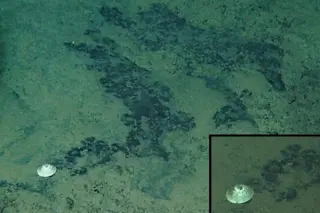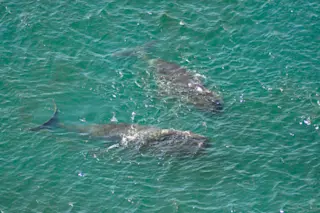From Aristotle's claim that a dolphin could jump over the mast of a ship to tales of dolphins coming to the aid of drowning sailors, myths about this sea mammal have long overshadowed fact. But now the scientific facts themselves are adding to the legends. For instance, take the idea that dolphins swim faster than they should be able to. A host of physicists and biologists have for decades declared dolphin speeds (nearly 25 miles per hour) impossible, given the density of water and the amount of muscle dolphins have. Then researchers began scurrying to find out how the creatures do it.
"Hope springs eternal," says Frank Fish, a biologist at West Chester University in Pennsylvania. "Dolphins fascinate us—the public and scientists and everyone. And we always hope there is something that nature has figured out, some kind of special drag-reduction mechanism, that people might benefit from." The military, of ...














